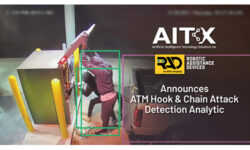Hoodwinking the Hoodlum

To safeguard a security system from an intruder’s effort to defeat or circumvent an alarm, security contractors should be thinking about innovative ways to prevent such an action before it ever occurs.
Have you ever thought about integrating “decoy” equipment into your security system design? What, if any, impact do diversionary installation tactics provide to help minimize loss potential at a client’s premises?
Of course, decoy video surveillance equipment is commonly installed in commercial premises to help minimize internal theft and shoplifting. However, the use of decoy security system equipment and peripheral devices are a technique I have utilized for years in my arsenal to defeat perpetrators who are all too familiar with the limitations of most security installations. To further explore and help security contractors understand decoy methodology, we’ll concoct a fictional intrusion that is all too common in real life.
An Intruder Makes His Move
In our example, an intruder forcibly enters a business and attempts to disable and circumvent the security system by ripping the control panel off of the wall, along with the RJ-31X telephone jack and coupler cord. The perpetrator notices there is another piece of alarm equipment (the backup radio) directly above the control panel, complete with an antenna on top of it.
This particular type of attack is surely catastrophic to the security system, especially if the backup radio is a one-way unit. Obviously, in this example it certainly wouldn’t take much effort or special tools for the intruder to accomplish the goal to avoid detection or apprehension. In fact, the entire attack could probably be accomplished in less than one minute. As a result, the perpetrator is able to remove merchandise or other contents unimpeded from the premises.
Imagine the business owner arriving at work only to discover the vandalized control panel laying outside the front door. Needless to say, a great deal of shock and dismay would ensue about the ease in which the intruder defeated the security system that was supposed to prevent the act in the first place.
Losses from this type of intrusion (I have investigated cases analogous to this very example) will invariably increase the litigation potential against the alarm contractor brought on by the subscriber, their insurance carrier, or both. And don’t forget the negative press that commonly swirls around successful burglary events.
[IMAGE]11684[/IMAGE]
Deploying The Diversion
When considering security system design methodology, it’s important to fully understand that the control panel set and/or radio must always be in a protected part of the premises. Just because an installer mounts the equipment inside retail establishment doesn’t mean they have accomplished the goal of protecting the equipment.
When selecting where to place the control equipment, you should always determine if the location is such that it would be easy or difficult for an intruder to gain access to it. It is also helpful to separate different parts of the core security system, thereby making it more difficult for an intruder to succeed in rendering the solution useless.
With the aforementioned example in mind, let’s now incorporate the installation of decoy equipment into the actual security system. The decoy gear in this case is an empty control panel housing, fully tampered and installed in plain view near the front door of the premises with a factory-supplied key lock and screwed shut. A security company decal is also placed on the panel, a fake RJ-31X telephone jack and coupler cord is exposed and fully tampered, and to add more realism to this tactic, several fake circuit wires are run into the panel.
Now with the decoy system deployed, it’s a whole new ballgame should an intruder attack. The opportunity aspect of the crime has been stymied: what the intruder thought would be an easy circumvention of the security system is instead a trap. Regardless if the intruder is aware of it or not, the real security system is fully functional; the audible alarm is annunciating at the site and simultaneously the remote central monitoring station is receiving the transmitted alarm signals, and dispatching the police to the location.
Detail Contractual Necessities
Clearly, the installation of decoy equipment has a great potential to help minimize the risks associated with burglary. Security contractors offering these services to their clientele also can reap additional installation profits above the “real” system costs.
It is important to note: If you elect to utilize decoy methods in your business, the associated contract for the work must be extremely clear as to what you are intending to do and what the specific purpose is for the decoy equipment.
Likewise, if a decoy system is offered to the customer and they elect not to purchase it, documentation still needs to be provided to and signed by the customer. Be sure to get in writing that they have specifically declined this recommendation. Spell out all the reasons why they declined, such as additional cost considerations.
Warning: This column is not intended to be legal advice and should not be construed as such. Please first consult your lawyer and/ or advisors, with any concerns or questions you might have before taking any actions or inactions.
If you enjoyed this article and want to receive more valuable industry content like this, click here to sign up for our FREE digital newsletters!

Security Is Our Business, Too
For professionals who recommend, buy and install all types of electronic security equipment, a free subscription to Commercial Integrator + Security Sales & Integration is like having a consultant on call. You’ll find an ideal balance of technology and business coverage, with installation tips and techniques for products and updates on how to add to your bottom line.
A FREE subscription to the top resource for security and integration industry will prove to be invaluable.








